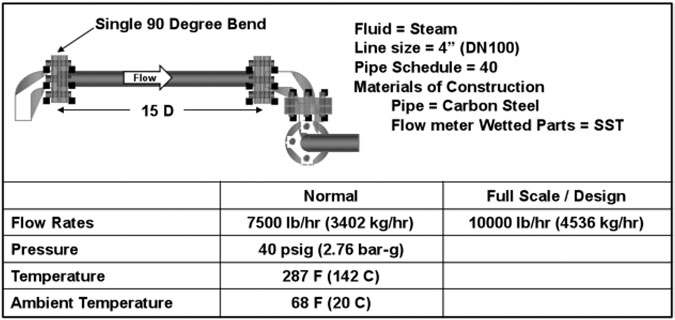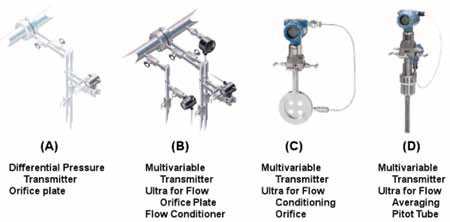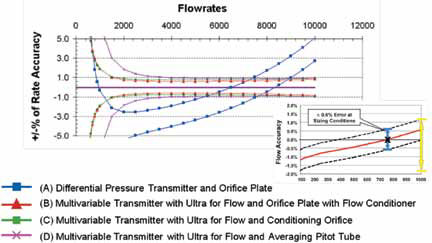DP Flow Meter Selection(II)
The flow application example referenced in the remainder of the article is detailed in Figure 1 and compares four different flow meter technologies, as shown in Figure 2.

Figure 1. Flow data for application example

Flow meter Capability
The next step in the selection process is to determine how well the flowmeter meets the given application. Flow meter capability is, among other things, dependent on the following parameters: installed performance, transmitter performance, permanent pressure loss and straight pipe requirements. These performance parameters should be prioritized based on the measurement purpose.
Installed Performance
When considering installed performance, be sure to understand the performance of the flow meter over the entire flow range. It is important to note that the installed performance is not equal to reference accuracy because it takes in account environmental effects, including line pressure variability, temperature fluctuation and drift/stability. Additionally, transmitters specified as a percent reading perform better at low flow ranges.
When a flow meter is specified as percent of span the error at low flow rates gets magnified.
For example, if the transmitter is spanned for 0 to 100 inH2O, a reference accuracy of ±1 percent of span reflects a 1 inH2O error across the full flow range. If the transmitter is reading 5 inH2O, this represents a 20 percent error. Alternately, a transmitter specified to be 1 percent of reading would have a .05 inH20 of error if it were reading 5 inH2O.
Another key consideration is that coefficients, such as the discharge coefficient of the primary element, the gas expansion factor of the liquid source and the thermal expansion of the construction material, vary with flow. If accuracy is sized at a specific flow point, then there is risk that errors will occur away from that sizing point. It is therefore recommended that accuracy is sized over the full range of flow to dynamically correct for these variables. Other factors may also contribute to measurement variation.
Errors in flow measurements are also attributed to errors in density measurement. For uncompensated velocity—a volumetric measurement that does not take into account the fluid's density properties, such as a turbine meter—the percent error in flow is optimal. While an uncompensated differential pressure measurement results in reduced percent error, it is still not optimal. A multivariable measuring device compensates for both pressure and temperature variation, and consequently produces the lowest flow error at <0.1 percent. Figure 3 compares the total system performance of the various flow meter technologies. It is evident that (B) and (C) rate higher in accuracy through a wider flow range.

- Pre:DP Flow Meter Selection(III) 2016/1/27
- Next:India Exhibition-2013 2013/8/9
